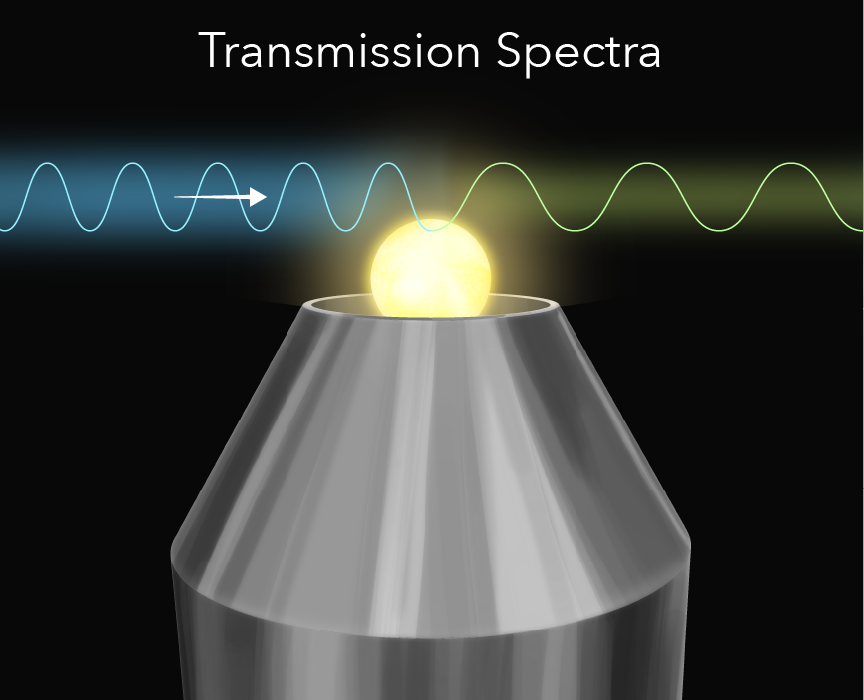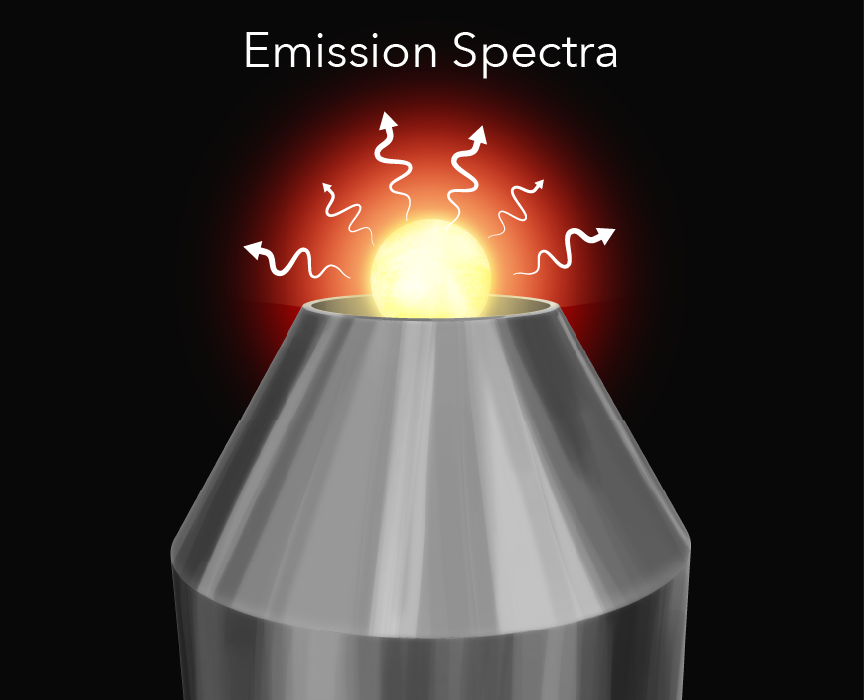Laser-heated aerodynamic levitation furnace
The Experimental Planetology group's laboratory is equipped with a laser-heated aerodynamic levitation furnace, which is coupled to a Fourier-Transform Infrared (FTIR) spectrometer. This innovative, custom-built system is capable of creating compositionally diverse melts under controlled 1-bar atmospheres. It determines in situ the composition of species outgassing from the melt, essentially measuring the secondary atmosphere of a miniature, molten planet.
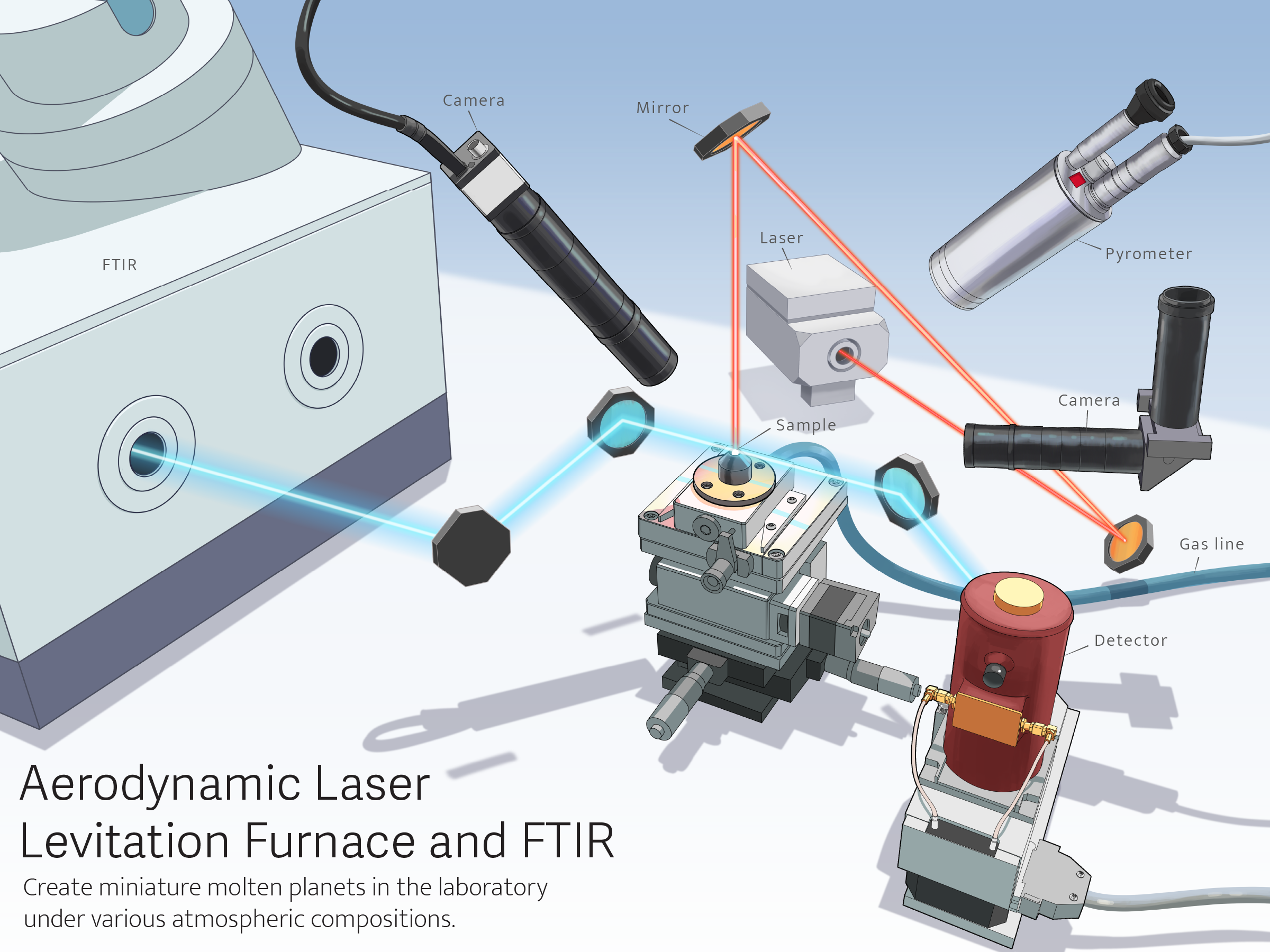
Samples are heated by a 10.6 μm, 120 W CO₂ laser (Coherent), which can achieve temperatures well above 2500°C. This allows for the synthesis of melts with a wide variety of compositions, such as primitive terrestrial magma analogs, metal-rich meteoritic compositions, and exoplanet analog compositions inferred from host star abundances. The samples are placed on top of a conical nozzle, with the CO₂ laser being guided by a series of mirrors to heat the sample from above. For silicates, approximately 20-25 mg of the sample is used to create a sphere about 2 mm in diameter. A pyrometer measures the sample's temperature throughout the experiment, while two cameras monitor its stability (one views the sample from above, and the other from the side). A gas stream flowing vertically from beneath the sample causes it to levitate, creating a controlled 1-bar atmosphere around the sample. The gas composition can be varied by mixing up to seven gases (Ar, CO₂, H₂, O₂, N₂, SO₂, and Cl₂), allowing a wide range of redox states for the gas surrounding the sample. Bronkhorst Flexi-FLOW mass flow controllers (2000 sccm full scale) control and monitor the gas flow rates. The key advantage of levitating the sample is that it produces contactless melts, thus eliminating contamination from sample holder materials.
A distinctive feature of this system is its integration with a Vertex 80v FTIR spectrometer (Bruker), which operates under vacuum. The FTIR, utilising an UltraScan™ Michelson interferometer, can perform scans at 110 spectra/s (at 16 cm^-1 resolution) and has a resolution up to 0.06 cm^-1. Equipped with both internal and external mercury cadmium telluride (MCT) detectors and an automatic beamsplitter exchanger, the system covers wavelengths from roughly 0.6 to 30 μm. This spectrum includes the near and mid-infrared bands, as well as segments of the visible and far-infrared spectra, enabling the identification of a variety of outgassing species. Importantly, our measurement spectrum (0.6 to 28.5 μm) matches that of the James Webb Space Telescope, currently engaged in the study of exoplanet atmospheres. Consequently, our system offers valuable experimental data to support these observations.
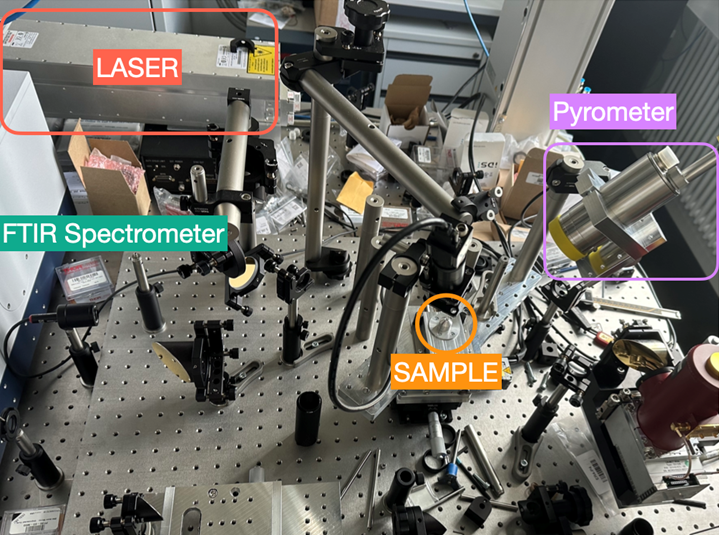
The FTIR has two windows: one measures the emission spectra of gas evolving from the molten sample, and the other uses an infrared source with an external detector to measure the transmission spectra of the gas just above the sample. Both transmission and emission spectra are crucial for understanding exoplanet atmospheres, yet our knowledge of the compositional parameter space of these atmospheres, particularly for hot, rocky planets, remains limited. Our laboratory's laser levitation furnace and FTIR system offer a state-of-the-art technique for measuring in situ the transmission and emission spectra of diverse planetary melts, providing invaluable experimental constraints to inform telescope observations.
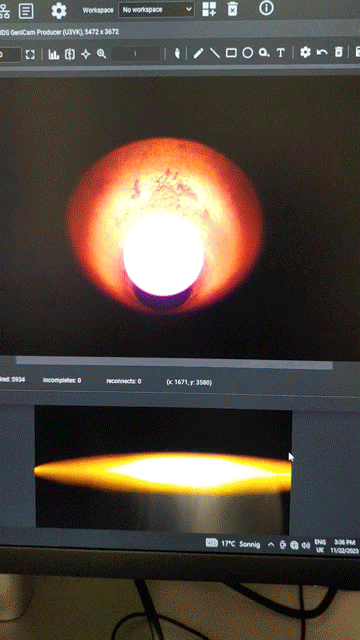
Once a molten sphere is generated, turning off the CO₂ laser results in extremely rapid quench rates (approximately 800-1000°C/s), enabling the sample to quench into a homogeneous glass successfully. These glass samples can then be analysed with various instruments, such as infrared spectrometers and electron probe microanalysers, to measure the major element compositions and the solubilities of volatiles (e.g., H₂O, CO, CO₂, S, and Cl species) in diverse planetary melts. In conjunction with the in-situ spectral measurements of the atmospheres of miniature planets, this system provides a foundational understanding of the connection between the interiors and atmospheres of hot, rocky worlds.
